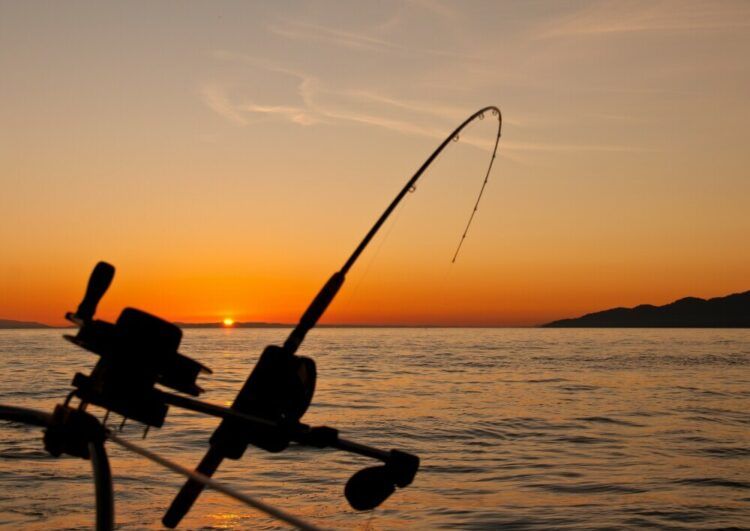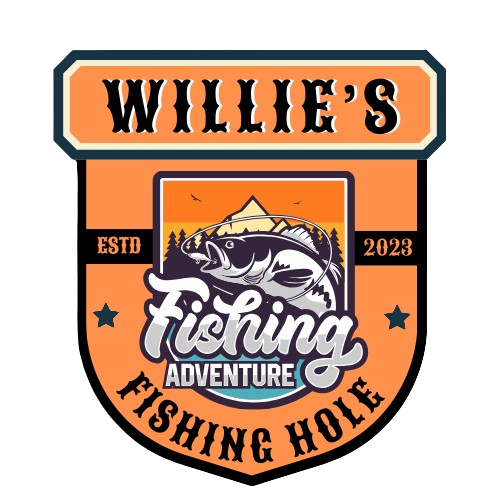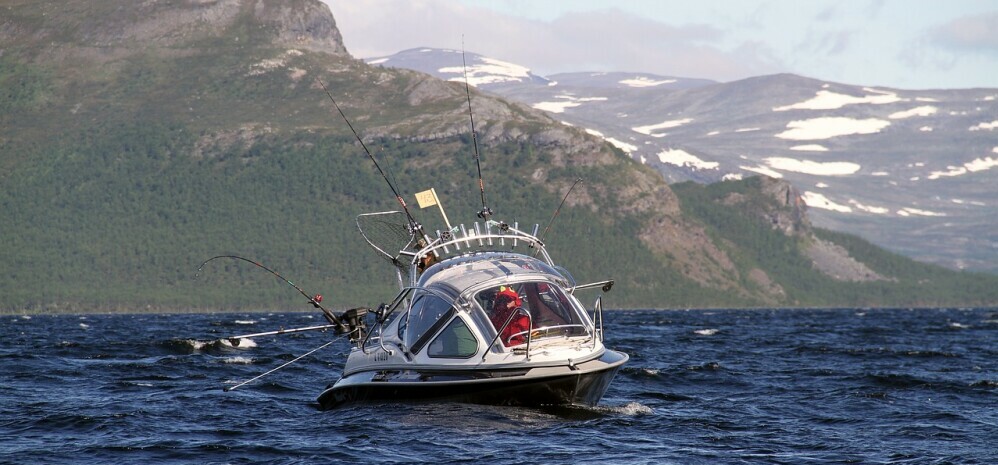Welcome to the next installment of Willie’s Fishing Hole – “Chasing Giants: Trolling for Trophy Fish”. This is always a topic that even seasoned giant killers can sometime struggle with. There are simply times when you follow all the rules of thumb and nothing works.
When you see anglers docking their boats and they have caught their limit, yet again, you always hear, well they were lucky today. But is it luck or skill? Trolling goes back centuries and is indeed an art form in itself. It is not just about technique; it is a time honoured tradition that is both thrilling and rewarding.
So hop into Willie’s Charter, put on your life jacket and buckle up! We’re going fishing, we are going to learn and most of all, we’re going to have fun.
What is Trolling?
Sometimes you might think a boat is just sitting still, hardly moving but you notice they have rods that are bent over. You are new to this and wonder, how can that be? No one is running for the pole to fight the fish they have on. Alas, your boatmate tells you they are trolling with downriggers at very slow speeds compared to us heading out to a spot.
Trolling traces back centuries when one fine day, anglers discovered that moving bait will make fish go crazy compared to baits just sitting in the water doing nothing but looking pretty.
Today, trolling is like playing chess. The equipment and strategies used have come a long way since the ancient anglers discovered it. Fish tease you with a bump and run technique enough to drive you made some days. But the thrill of the game keeps you coming back for more as you hone your skills, dial in your speed and check your water temperature.
The Art of Trolling and Mastering It
So you may have been told you just hook a pretty lure on your line, slow your boat down, set the downrigger to some desired depth and you will catch fish. I am here to tell you that is not the case. Although pretty may catch somethings in life, it will not necessarily catch fish. You know what I am talking about.
It is a form of fishing, that any other form, requires skill, knowledge and patience. It is more than just dragging a lure around to wash it. You need to understand the habitat of the species you are chasing on a given day. This includes weather patterns, water temperatures, fishing depths and trolling speed.
So once you have those things covered, now it is time to understand why you want to troll. First, you can cover a lot of water in an outing compared to simply casting from shore. Fish do move after all. Second, it allows you to test different depths and water temperatures in search of just the right combination of both.
Chasing Giants: Trolling for Trophy Fish is like learning to play chess! Should you move your Pawn? Should I take their Bishop? Or should I move in for the kill. Once you master the art of trolling, you will be consistently saying Checkmate. So let’s go play chess with that Wiley fish down below.
Gear Up: Selecting the Right Trolling Equipment
You are ready to start your lessons. First lesson is patience young Grasshopper. Remember the Wax On and Wax Off techniques from Karate Kid? Well learning to troll has lessons as well. It is not as simple as just getting in the boat and going. You need to be equipped with the right gear.

- Safety first. Life jackets, bail bucket, horn or whistle, tow rope, fire extinguisher, extra fuel and a paddle just in case.
- We are going to be assuming we are downrigging in this article, although depending on the species and time of year, you may find flatlining an option. For either technique use a downrigger rod (there are different types and lengths) and a level wind reel with a line counter on it.
- On a downrigger rod, a 25 to 30 pound test monofiliament line is a good choice for your reel. It allows for some stretch to deal with the movement of the cannonball without putting extra strain on your rod tip.
- If you are flatlining you will want a braided backer line with a weighted lead core main line. Lead core tends to come in different pound test and a certain number of colours. For every colour change that will equal a certain depth. Adding a deep diver crankbait will change this but for the most part not worth worrying about. 10 colour lead core is the most common. This means there are 10 colour changes on a full spool and each colour change equals approximately 5 feet in depth.
- You want a temperature probe that can not only provide you surface temperature but, temperature at the desired depth you are wanting to fish. Remember that temperature does matter.
- Best case you have a probe that also gives you the speed you are trolling down at the ball. That is the speed that matters and what your instrument panel tells you is not the actual speed at the ball. Remember the drag of the cannon ball, the downrigger cable, the line from the rod and the bait all contribute to the speed at the cannon ball.
- A good fish finder with GPS is no longer a luxury but a must. It can help in the case of an emergency or simply for marking where you were catching fish for the next time.
Navigating the Waters: Locating Prime Fishing Spots
We are all setup. We have our safety gear, the boat is full of gas, the drain plug is in and we have our rod and tackle ready for the day. So now what? We have to find the fish. This is more than just saying, there are a bunch of boats that must be where they are. You have to find the right temperature, depth and what they are biting on.
Walleye Wonders: Trolling Tactics Unleashed
Using your GPS, which can assist in marking hot spots for future trips, and Fish Finder, move around the water looking for shoals and sudden drop offs. These are Walley favourites. If you troll along these underwater structures you are almost guaranteed some Walleye. Of course there are other factors but this is a good start.
Walleye are not a fish to target if you are a fair weathered angler. They like overcast days where there is low light and are most active during the dawn and dusk parts of the day.
Water temperature is key with any species and Walleye are no different. They prefer cooler waters so in the warmer seasons, concentrate your efforts on deeper pockets of water and move to shallower areas when the air temperatures are cooler during the Spring and Fall.
Trout Treasures: Dive Into Trolling Delight
Trout are a cold water species and as such are often found in deep pockets of water. As the water temperature changes, trout will move up and down in the lakes.
As with Walleye, sudden drop offs and ledges are great places to start your trout hunt. Use you fishfinder to identify these underwater structures and start you trip there.
As you close in on them toward a river system for their spring and fall migration habits, look for submerged rocks, fallen trees and other hidden gems for them to hide in.
Salmon Spectacular: Mastering the Trolling Dance
Salmon are born predators and as such they will follow baitfish. Find the baitfish, find the salmon. Use your fishfinder to find the baitfish.
This species prefers specific temperature layers in the water column. You will need a good temperature probe that not only measures temperature at the surface but also at varying depths. Without this vital piece of equipment, locating the salmon will be challenging.
During the spring and fall look for salmon closer to shore, focusing on rocky areas and the mouth of river systems.
Fish do not stay in one spot. They move around based on weather patterns, temperature, current season and water clarity. You too have to adapt to these changes in order to be successful in your outing.
The Art of the Troll: Trolling Techniques That Hook
We found the fish now we need to hone in on the right speed, water temperature, depth and bait. For this you absolutely a few pieces of key equipment. A fishfinder, a temperature probe and a speed indicator at the cannon ball.
Thermometer Tango: Hot Tips for Walleye Trolling!
- Walleye like cooler waters and in the early morning and late evening you may find them shallower than mid day. Overcast days are best for this species and when trolling for them.
- Ideal water temperatures for Walleye are 55 to 68 degrees Fahrenheit.
- Keep your speed between 1.5 to 3 mph. This speed will change based on the bait you are using.
- Be sure to consider using a rod and reel set up with lead core and deep diving crankbaits.
Coldwater Ballet: Master Trout Trolling Dynamics!
- Trout thrive in the cooler water. Finding the temperature range between 45 and 60 degrees Fahrenheit is crucial to your success.
- Early morning or late afternoons are prime time when fishing for Trout.
- Spoons, spinners and small plugs are the lure types of choice but you are not limited to these.
- They like a slower presentation. Your optimal speed is between 1.5 and 2.5 mph.
- To get to these hard fighting acrobatic fish, you will need a downrigger depending on the time of year when trolling.
Speed Peaks & Temp Beats: Unlocking Salmon Secrets!
Now for the monster of these 3. Salmon do not dance but they sure give a relentless fight. So here are some tips to help you locate and catch these heavy weights.
- Chinook Salmon like speeds between 2.0 and 3.0 mph while Coho like a faster presentation between 2.5 and 4.0 mph. These speeds vary based on the trolling depth.
- Low light and overcast days are your best chance at getting a shot at champ.
- Water temperatures for Chinook are in the 45 to 58 degrees Fahrenheit range while Coho like it slightly warmer at 50 to 60 degrees Fahrenheit.
- The use of flashers with a fly or meat rig presentation are a great option for Salmon when the tried and true spoons and plugs are not firing.
Fine-Tuning: Your Setup Will Change
As you start your trolling experiences, you will be learning on the fly. Constantly adjusting your speed, downrigger depth and bait as you try to find just the right location. Keep these tips in mind:
- Spring and Fall the fish tend to be in shallower waters and closer to shore. Trout and Salmon migrate upstream at different times but this is when you will find them in the river systems or heading to them.
- Summer creates its own search and destroy missions. During these times fish are in the deeper water looking for that prime temperature layer. You may find you are so close to the bottom fishing the different species, that your cannon ball is actually bouncing off the bottom.
- Lure colours and sizes change based on the season. 3.5 to 4 inch sized spoons are often a springtime selection and 5 to 6 inch magnum sized spoons become the goto in the late summer and fall.
- Pay close attention to the water temperatures. A body of water can flip its temperature overnight so the depth the previous day might now be too warm and you have to go deeper or shallower to find the fish.
Final Thoughts
As you head out into your journey of trolling, I hope these tips will prove invaluable. Remember that not every body of water is the same but the techniques used are from selecting the right line to the right trolling speed. It all matters.
Utilize the various pieces of equipment discussed, rely on other anglers and enjoy “Chasing Giants: Trolling for Trophy Fish“.
Please share your successes and stories with the fishing community here at Willie’s Fishing Hole. Drop us a line below on on out Contact Form. We would love to hear form you.
Until next time, tight lines everyone!

